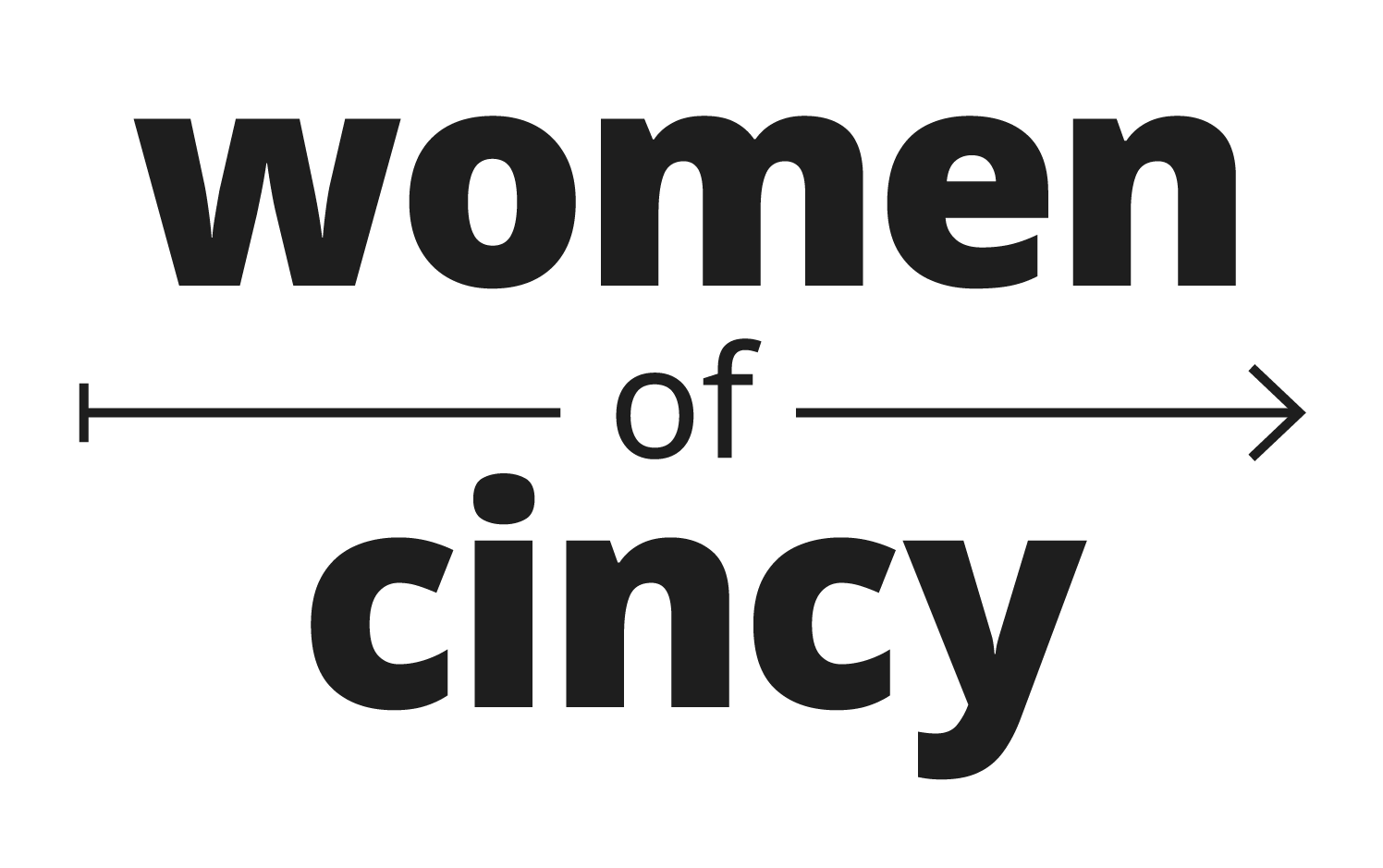Celebrating Cincinnati Pride: From 1973 to 2024
Researched and written by the Women of Cincy team.
Photography by Chelsie Walter.
Cincinnati Pride, like other Pride demonstrations across the United States and the world, began at The Stonewall, a club in New York City that was at the center of a police raid in 1969. The Stonewall was a popular place for Black drag queens, transgender and gender nonconforming folks, and others in the community. The demonstrations in response to the raid became a defining moment in history. While these demonstrations were not the first in the L.G.B.T.Q+ rights movement, it was the instance that these issues became more visible – and impactful. In the years following Stonewall, parades and demonstrations began across the country – including in Cincinnati.
In 1973, beginning on April 6 and ending on April 8, 40 people gathered on Fountain Square in celebration of the L.G.B.T.Q+ community.
However, it was not a continuous, annual event in the city as we now know Cincinnati Pride. The next organized celebration was not until June 24, 1978. There was no celebration from 1995 until 2000. It began again when it was organized by Chris Good. While there is no clear reason for the absence between 1995 and 2000, in 1993, Cincinnati voters passed Issue 3 and the subsequent adoption of Article 12, which prohibited granting L.G.B.T.Q+ individuals protection from discrimination. It was repealed in 2004.
From 2004 to 2009, the now-closed G.L.B.T (Gay, Lesbian, Bisexual, Transgender) Center supported the event. After 2009, with the parade continuing to grow each year, the Cincinnati Pride Committee began organizing the celebrations.
As the years went on and Cincinnati Pride grew in support and popularity, the city was at the heart of one of the most impactful decisions for marriage equality in the U.S. Jim Obergefell graduated from the University of Cincinnati in 1990, majoring in secondary education and German. After his graduation, he met his future husband, John Arthur, another U.C. graduate, at the U.C. staple, Uncle Woody’s bar. They lived quietly in Cincinnati together.
In July 2013, John’s aunt performed their wedding ceremony in a medical plane on a tarmac in Baltimore. At the time, John was suffering from the late stages of A.L.S., which included paralysis. However, states like Ohio, which had banned same-sex marriage in 2004, could still refuse to recognize same-sex marriages performed in other states, meaning federal marriage benefits would not be granted when Jim and John returned home. Jim and John filed a complaint in U.S. District Court. In October 2013, John passed away. Eventually, their case made it to the U.S. Supreme Court. On June 26, 2015, the Supreme Court handed down the landmark decision of Obergefell v. Hodges, which granted marriage equality in the U.S.
As we look back at the past, we must also look to the future. What started with 40 people in Fountain Square in 1973, became more than 250,000 attending Cincinnati Pride in 2024.
Some Words from Pride Over the Years:
“I’ve been to Pride every year since 1972 – in San Francisco, Chicago, New York. I’ve been around a while; I’m 71. The thing about Cincinnati Pride is that it’s gotten bigger and bigger, and the crowd is more diverse. The first year, there were maybe 20 people on Fountain Square, and I’ve watched it grow.” –Roger, 2023
Pride for many years has been a time of mixed emotions. I watch young people often finding their voice and space while I am consistently being reminded that we still have so much work to do. As someone who has helped for many years create spaces and events for pride, I’m often exhausted but in reflection I can sit back and see the mingling of celebration and the fierce spirit of the original riot coupled in the month. Pride, like our community, is deep, ever-changing, complex, and resilient. –Tristan Vaught, Co-founder of Transform, 2022
“I identify as queer. It's always been important to me for everyone to have equal rights and celebrate their individuality, whether they’re gay, straight, trans. My daughter has grown up learning that there are more people other than ourselves.” –Consuelo, 2023
“I love Pride, and I'm here because I want security and marriage rights just like our straight counterparts. Long live Golden Lions from the old decades [Editor’s note: The Golden Lions Lounge was one of the oldest gay bars in Cincinnati. It closed in 2011.] – it was just a fun place to be, and having fun is so important, and I love supporting local drag queens and supporting the art of drag.” –Kristen, 2019
“For me, personally, Pride is being able to love who you want and to be loved, to be supported, to feel safe in your community, and to be true to yourself. It’s an opportunity for people to be the best versions of themselves – to do that, you need tolerance, you need kindness, you need acceptance. As a society, we've come such a long way with L.G.B.T.Q. rights, and it's just so exciting to be part of that and to see that growth and to see something like Cincinnati Pride grow – I think they have more than 200 participants in the parade this year, which I think is the largest on record. It's the 50th anniversary of Cincinnati Pride, and so it's really just amazing to see. There's still a long way to go; there's a lot of legislation that's looking to maybe rewind some of those hard earned efforts, but we can support each other and then be allies to each other.” –Jackie, 2023
“Pride is about protesting and marching and being visible because we're not always allowed to be visible. Pride is about being present, making our presence known, and saying that we're here regardless if you want this to be because we're valid human beings.” –Rhiannon, 2022










